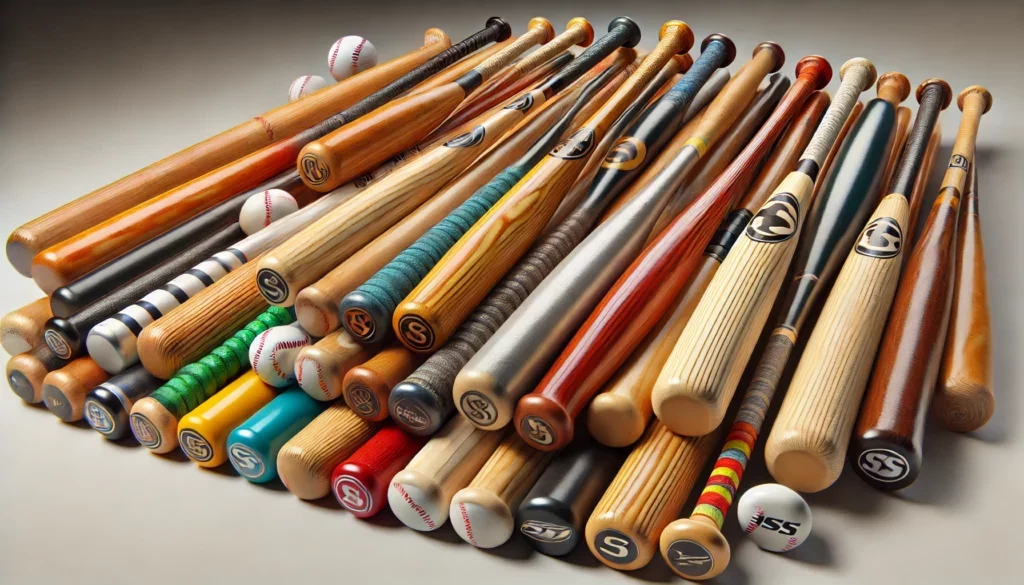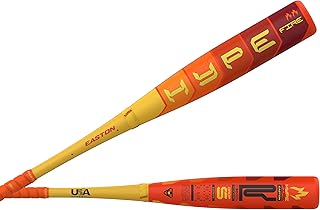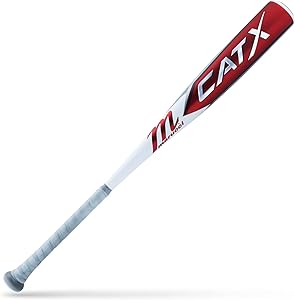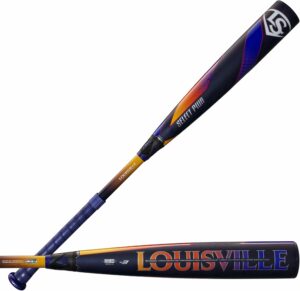The Ultimate Baseball Bat Buying Guide for NTX Select Players
Finding the Perfect Bat for Your Young Athlete
Choosing the right baseball bat is one of the most important decisions a player can make. With so many sizes, materials, and league requirements, the selection process can feel overwhelming for parents new to select baseball. At NTX Select Baseball, we want to make sure your athlete steps up to the plate with the right gear.
In this guide, we’ll break down everything you need to know about baseball bats—so you can find the perfect match for your player’s skill level and league requirements.
1. Understanding Baseball Bat Anatomy
Before diving into bat selection, it helps to know the different parts of a bat:
- Knob – Prevents the bat from slipping out of a player’s hands.
- Grip – Usually covered with tape or a rubber grip to provide comfort and control.
- Taper – The transition from the handle to the barrel.
- Barrel – The thickest part of the bat, designed for optimal contact with the ball.
- End Cap – Helps control the bat’s balance and swing weight.
Knowing these parts will help when comparing bats and deciding on comfort, swing speed, and power.
2. What Is “Drop Weight” and Why Does It Matter?
Drop weight is the difference between the bat’s length (in inches) and weight (in ounces).
- Example: A bat that’s 30 inches long and weighs 20 ounces has a drop weight of -10.
- The higher the drop weight (e.g., -13), the lighter the bat.
- The lower the drop weight (e.g., -3), the heavier the bat.
Common Drop Weights by Age:
| Age Group | Recommended Drop Weights |
|---|---|
| 4-6 years | -11 to -13 |
| 7-11 years | -8 to -12 |
| 12-14 years | -5 to -10 |
| 15+ years | -3 (BBCOR required) |
💡 Pro Tip: A quick way to check if a bat is too heavy—hold it straight out with one arm. If your child struggles to hold it for 30 seconds, consider a lighter option.
3. Types of Baseball Bats: Which One Is Right for Your Player?
Composite Bats
✅ Large sweet spot, less vibration, lightweight
❌ Requires a break-in period, not ideal for cold weather
💲💲💲 Price: Higher
Alloy (Metal) Bats
✅ Ready to use right away, durable, works in all weather
❌ Smaller sweet spot, can have more vibration
💲 Price: Budget-friendly
Hybrid Bats (Composite Handle + Alloy Barrel)
✅ Combines durability of alloy with reduced vibration of composite
❌ More expensive than full alloy bats
💲💲 Price: Mid-range
💡 Pro Tip: If your player wants an alloy bat but dislikes the sting, consider a hybrid bat with a composite handle.
4. One-Piece vs. Two-Piece Bats
- One-Piece Bats – More rigid, ideal for power hitters who want maximum energy transfer.
- Two-Piece Bats – Offers more flex and reduced vibration, great for contact hitters looking for extra bat speed.
5. Balanced vs. End-Loaded Bats
- Balanced Bats – Even weight distribution, making it easier for players to control.
- End-Loaded Bats – More weight at the barrel’s end, providing more power for stronger hitters.
💡 Which one should your player use? If they are younger or rely on bat speed, a balanced bat is best. If they are a power hitter, an end-loaded bat can help drive the ball farther.
6. Finding the Right Bat Length
Choosing the correct bat length ensures the best swing mechanics. Use these simple measurement methods:
1️⃣ Hold the bat against the chest and extend it out—if fingertips reach the end, it’s a good fit.
2️⃣ Place the bat vertically against the leg—if it reaches the palm, it’s the right length.
General Bat Length by Age:
| Age | Bat Length |
|---|---|
| 5-7 | 24″-26″ |
| 8-9 | 26″-28″ |
| 10 | 28″-29″ |
| 11-12 | 30″-31″ |
| 13-14 | 31″-32″ |
| 15+ | 32″-34″ |
7. League Regulations & Bat Certifications
Each league has specific bat requirements, so it’s crucial to check before purchasing.
Common Bat Standards
| Certification | Age Group | Barrel Size | Drop Weight |
|---|---|---|---|
| BBCOR | High School & College | 2-5/8″ | -3 |
| USSSA | 8-14 | 2-5/8″ or 2-3/4″ | -5 to -10 |
| USA | 7-14 | 2-1/4″ or 2-5/8″ | -5 to -13.5 |
| T-Ball | 7 & Under | 2-1/4″ | -10 to -14 |
💡 Pro Tip: If your player is moving up to high school baseball soon, consider transitioning to a -5 USSSA bat before switching to the required -3 BBCOR bat.
Final Tips for Buying the Right Bat
✔ Know your league’s rules – Make sure the bat meets certification standards.
✔ Choose the right drop weight – Younger players need lighter bats for better control.
✔ Consider bat material – Composite for performance, alloy for durability, hybrid for balance.
✔ Test before buying – If possible, let your player swing different bats to find the best feel.
✔ Buy with growth in mind – Kids grow quickly, so look for a bat they can grow into without being too heavy.
TL;DR (Too Long; Didn’t Read)
- The right bat depends on length, weight, and league requirements.
- Drop weight is the difference between length (in inches) and weight (in ounces).
- Material matters: Composite = better pop, Alloy = durability, Hybrid = best of both.
- One-piece bats are for power hitters; two-piece bats reduce sting and increase bat speed.
- Balanced bats are easier to swing, while end-loaded bats help power hitters.
- Make sure your bat meets league regulations (BBCOR, USSSA, USA).
💡 Need help picking the perfect bat for your NTX Select player? Test different options at a local batting cage or store before making a final decision!



